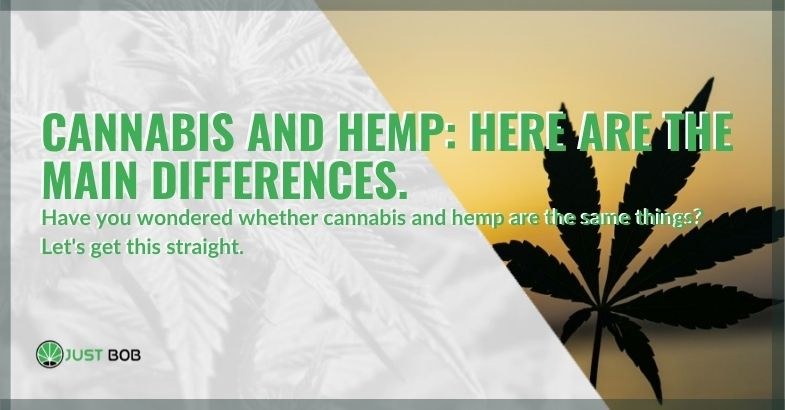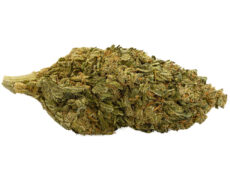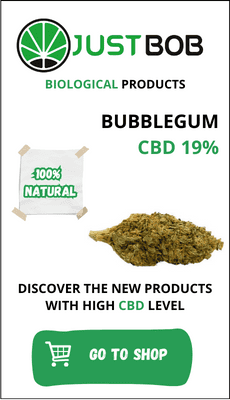Modified on: 19/04/2024
HAVE YOU WONDERED WHETHER CANNABIS AND HEMP ARE THE SAME THINGS? LET’S GET THIS STRAIGHT
In the collective imagination, there is often confusion between cannabis and hemp. As a result, the two words are used indistinctly. However, on a commercial level, there is no shortage of differences in terms of cultivation and appearance.
In this article on our Justbob blog, we will try to clarify this much-debated topic by first defining cannabis and hemp and then presenting the main difference, but with one central assumption.
-
 SMALL & BIG
SMALL & BIGBUBBLEGUM
Starting from: 1,25CHF/gIndoor | CBD – CBDA < 22%
Grams3 5 10 20 50 100 -


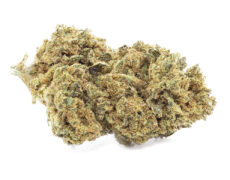
DO SI DOS
Starting from: 2,00CHF/gIndoor | CBD – CBDA < 19%
Grams3 5 10 20 50 100 -


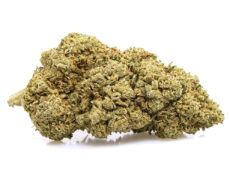
ROYAL GG#4
Starting from: 2,30CHF/gIndoor | CBD – CBDA < 40%
Grams3 5 10 20 50 100 -


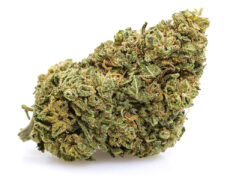
GORILLA GLUE
Starting from: 2,90CHF/gIndoor | CBD – CBDA < 20%
Grams3 5 10 20 50 100
The plant is the same since they are both parts of the botanical family Cannabaceae. One thing, however, is the issue relating to the medicinal and recreational variant; another is that relating to the food and industrial type
What is hemp?
Hemp is one of the best-known plants cultivated by man, used for around 10,000 years.
Specifically, it is a plant species appreciated for its versatility. It is no coincidence that hemp can be used in various ways: firstly, it is an essential source of food for humans and animals; it is also used to produce textiles and paper.
Regarding the latter, the Declaration of Independence of the United States of America, before being written in its final version on a parchment made of animal skin, was launched on hemp paper.
When we talk about hemp, we usually refer to legal hemp, i.e., the plant distinguished by having low amounts of THC (which makes it ‘non-psychoactive’) and essential contents of the other cannabinoids. This plant is mainly used in industry and foodstuffs.
Its seeds are considered a genuinely excellent superfood, mainly because of their exceptional nutritional value. They contain valuable nutrients such as protein, vitamin E, essential fatty acids, healthy fats, amino acids and minerals.
In most cases, the male plant is used, but female plants without THC are also cultivated for various purposes.
Read also: Hemp supply chain: why it is important that it is certified
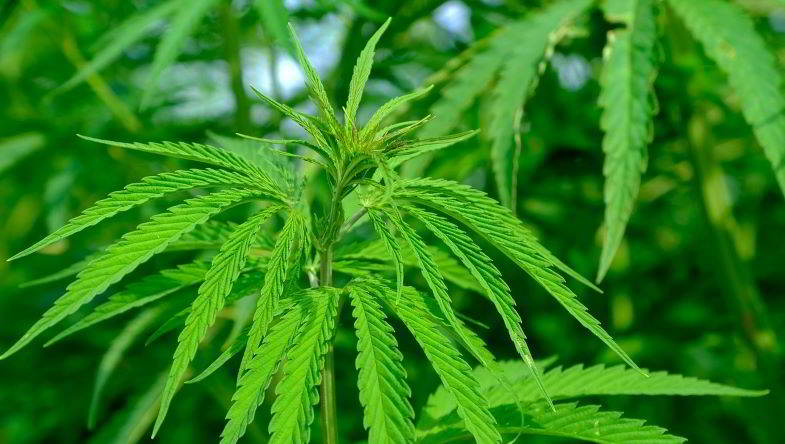

What is cannabis?
The term cannabis typically refers to plants that, once they have flowered, are dried and used for medicinal, curative or relaxing purposes.
A distinction must also be made between classic cannabis (which contains high levels of THC) and light cannabis (which has no psychoactive effects and is used to produce high CBD derivatives, such as CBD flowers).
Generally, the term ‘cannabis’ refers to inflorescence.
Recently, growers have experimented with a multitude of hybrids. It is these that are the most well-known cannabis varieties on the market.
Hemp and cannabis: the main difference
As we have seen, cannabis and hemp belong to the same botanical family, but they differ in certain subtleties.
Hemp is cultivated to obtain raw materials for the industrial sector (fibres, cellulose, seeds, oil, etc.); cannabis is grown and constantly developed to get high percentages of cannabinoids used in the pharmaceutical, cosmetics other sectors.
In addition to these, however, there are other aspects worthy of further study.
Genetic composition
In most European Union countries, CBD weed must have a THC threshold of less than 0.2% to be classified as industrial hemp. On the other hand, in the United States, the maximum THC threshold rises to 0.3%.
Hemp Sativa contains around eighty cannabinoids, of which CBD is defined as the healthy active ingredient in cannabis. In addition, its benefits are linked to sedative and calming properties, known since antiquity since it combats various physical and mental disorders.
CBD extract is legal in most EU countries and is mainly used in creams and oils. CBD concentration levels range from 3 to 30%.
Pharmaceutical cannabis, on the other hand, can have high levels of THC. This cannabinoid is added to some medicines to treat certain diseases.
Appearance
Another important difference between cannabis and hemp lies in appearance.
The cannabis plant has resinous buds, surrounded by pistils, branches and broad leaves.
Hemp plants have smaller buds with negligible amounts of resin. Hemp leaves are longer and thinner, while the stems are particularly fibrous.
Hemp, therefore, has less foliage and fewer branches and appears significantly less robust. It is also good to focus on the stalk to recognise a hemp plant: it is usually single and of a specific size. The hemp varieties cultivated for fibre and seeds also deserve a separate chapter; they can grow up to 6 metres in height.
Cultivation
Turning to cultivation, which is nowadays mainly carried out on an industrial scale, it should be borne in mind that hemp plants are grown side by side, not far from each other.
Cannabis plants (we are talking about both legal weed and those with a high THC content), on the other hand, need more space and are at their best when grown in a controlled environment (attention must be paid to humidity and temperature). On the other hand, hemp can be grown in various environments and climates.
About cultivation cycles: Hemp and cannabis also differ in this respect, since the former needs about 4 months to reach full maturity, while the latter, considering the variety, takes between 2 and 3 months.
Legality
Although the laws regarding THC thresholds seem apparent, there are many bureaucratic loopholes, regulations, and obstacles to the legal cultivation of hemp.
In the US, only in 2018, the US Farm Bill only removed hemp from the Controlled Substances Act. In Switzerland, on the other hand, some specific tariffs and conditions clearly state that hemp can only be grown for commercial purposes and with a licence. Therefore, amateur growers cannot have plants for personal use. So it is, although the THC content is within the threshold of 1%.
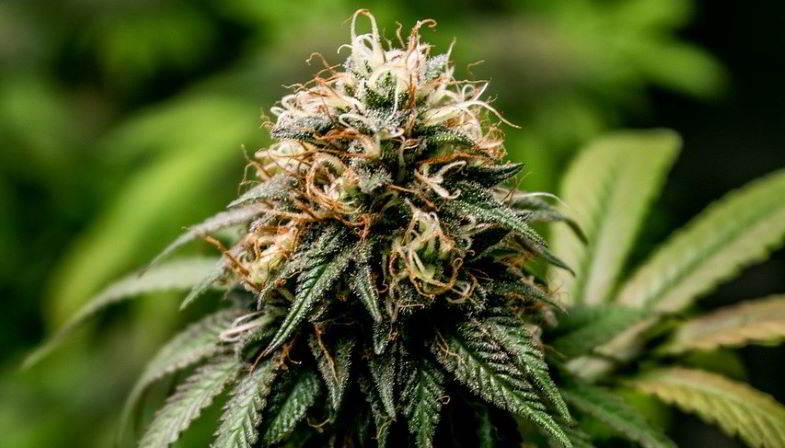

Use
Of all the plants cultivated by man, hemp is undoubtedly one of the most prolific over the past centuries. It has been considered the plant in the most significant degree for the production of textiles. Before the advent of synthetic fibres, hemp was also used to make ropes and sails.
The raffia fibres, for example, are produced from the stem of hemp and are still the strongest natural fibre available.
When superfoods are all the rage, hemp seed continues to be well received, especially by the health-conscious market segment.
However, the target market has grown considerably recently, so much so that in the not-too-distant future, hemp seeds could be used to solve nutritional problems in many countries around the world. The presence of quality nutrients could be an essential answer to the issue of undernourishment.
The benefits of hemp compounds are apparent: many supplements, CBD oils, and beauty and skincare products on the market offer promising results.
Finally, hemp is also considered a versatile solution in the construction industry.
In conclusion
After this brief discussion, you should clearly understand the differences between cannabis and hemp.
Before we say goodbye, we would like to invite you to visit our online store JustBob.ch, where you can find legal cannabis buds and many high Cannabidiol derivatives, including CBD flowers, to collect.
What are you waiting for? Visit our CBD cannabis shop today!


